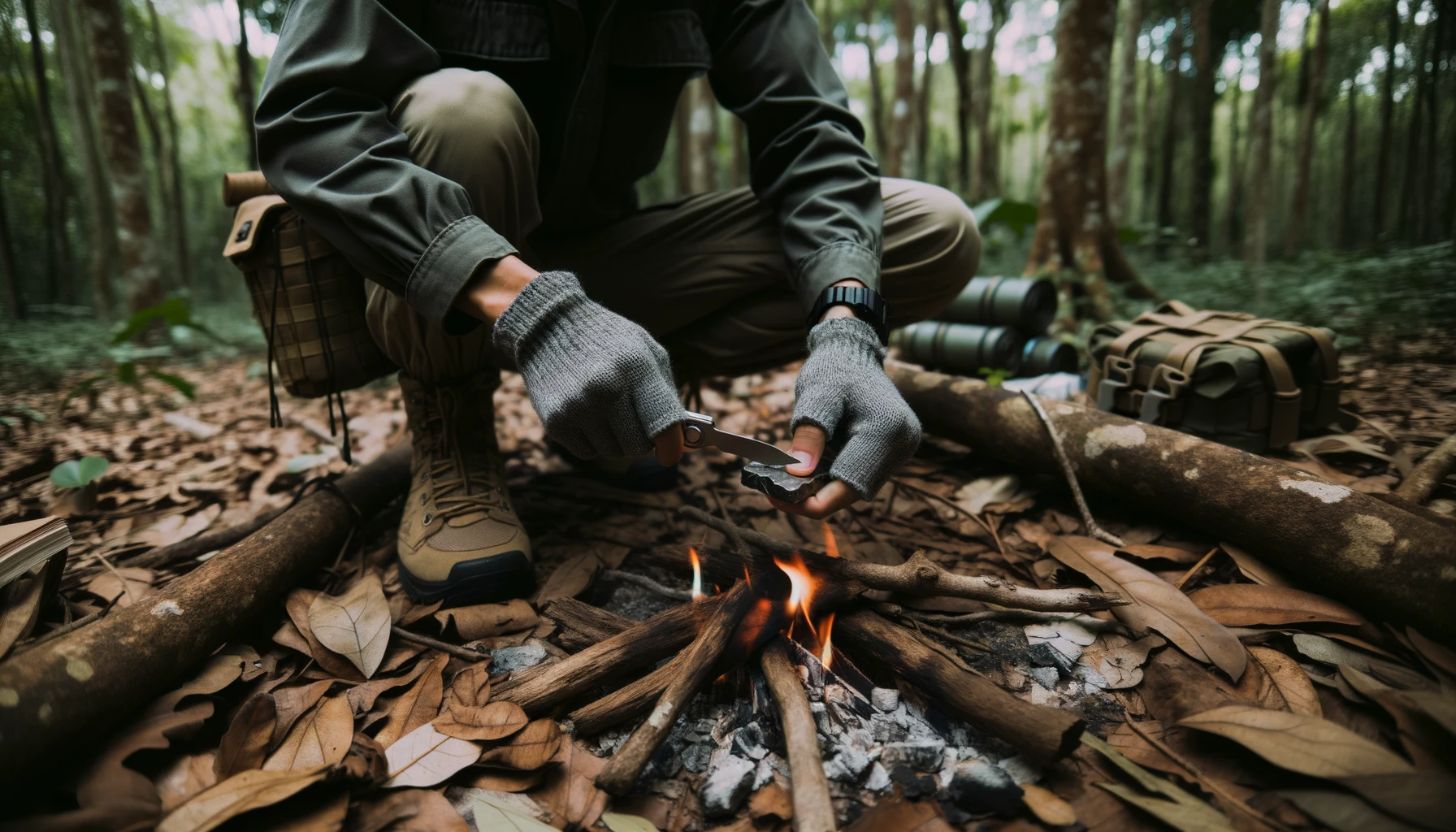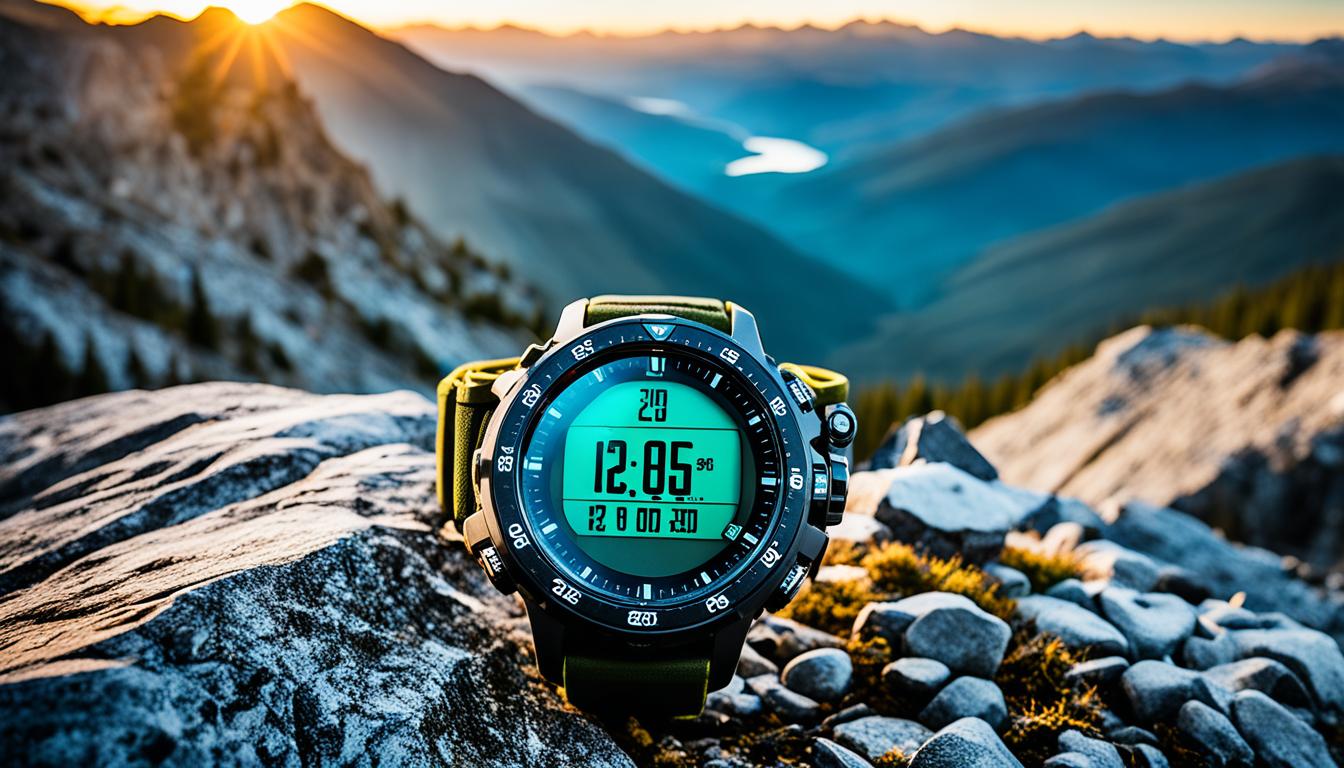Adventuring alone in the wilderness can be a thrilling experience, but it also comes with its share of risks and challenges. Whether you are an experienced survivalist or a novice hiker, mastering solo survival skills is crucial for staying safe in the great outdoors.
In this comprehensive guide, we will equip you with the knowledge and strategies needed to navigate the wilderness alone with confidence. From wilderness survival tips and self-reliance strategies to essential wilderness survival gear and survivalist skills, we will cover everything you need to know to stay safe and prepared during your solo adventures.
Key Takeaways
- Mastering solo survival skills is crucial for your safety when venturing into the wilderness alone.
- Essential solo survival skills include wilderness survival tips, emergency preparedness techniques, self-reliance strategies, outdoor survival tactics, and survivalist skills.
- Having the right wilderness survival gear, such as solo camping essentials and wilderness survival gear, is essential for staying prepared and increasing your chances of survival.
- Proper navigation and map reading skills, shelter building techniques, fire starting methods and fire safety, water sourcing and purification techniques, and food foraging and basic wilderness cooking skills are all essential for solo survival.
- First aid and emergency medical skills are crucial for responding to medical emergencies when there is no immediate help available.
The Basics: Building a Foundation of Self-Reliance
Before embarking on any solo adventure, it’s crucial to develop a strong foundation of self-reliance. Being self-reliant means having the confidence and skills necessary to rely on yourself when faced with challenging situations. Here are some self-reliance strategies and solo adventure tips to help you build that foundation:
- Practice makes perfect: Before heading into the wilderness alone, practice your survival skills in a controlled environment. Set up a tent, start a fire, and navigate using a map to gain confidence and proficiency.
- Develop a survival mindset: A survival mindset involves staying calm, assessing the situation, and making rational decisions. Learning how to manage stress and anxiety can help you stay focused and make effective decisions, even when you’re alone.
- Invest in quality gear: Having the right gear is essential when venturing into the wilderness alone. Invest in high-quality gear that will withstand the elements and enhance your experience. Make sure to pack the solo camping essentials, like a sturdy tent, a reliable backpack, and a high-quality sleeping bag.
- Learn basic repair skills: Being able to repair your own gear is a valuable self-reliance skill. Learn how to mend tears in your tent, fix a broken zipper, and patch a hole in your backpack to ensure your equipment lasts longer and is more reliable.
- Stay organized: Being organized can help you avoid mistakes and stay safe in the wilderness. Keep your gear organized and tidy, and make sure to have a checklist to ensure you don’t forget any essential items.
By following these self-reliance strategies and solo adventure tips, you can build a strong foundation of knowledge and skills that will serve you well when venturing out into the unknown.
Disclosure: When you buy through links on our site, we may earn an affiliate commission.
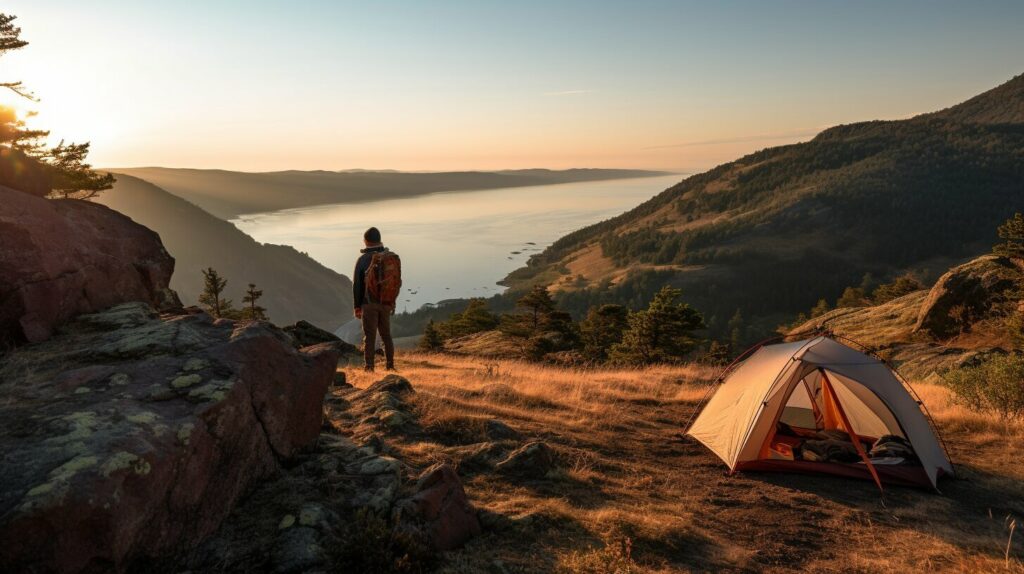
Essential Wilderness Survival Gear
When venturing alone into the wilderness, having the right gear is essential for your safety and survival. Whether you’re planning a solo camping trip or embarking on a more challenging adventure, you need to have the necessary gear to help you navigate the outdoors with confidence. Here are some must-have wilderness survival gear and solo camping essentials to include in your pack:
Clothing and Footwear
When packing clothing and footwear for your solo adventure, opt for lightweight, breathable, and moisture-wicking materials. Dress in layers to help regulate your body temperature, and provide protection from the sun, wind, or rain. A sturdy pair of hiking boots with good ankle support is also a must-have item for any outdoor adventure.
Essential Clothing Items
- Moisture-wicking base layersInsulating mid-layersWater-resistant outer layersSun hat and sunglassesWaterproof glovesExtra socks and underwear
Essential Footwear
- Hiking boots with good ankle supportWaterproof hiking shoes or sandalsCamp shoes for lounging around camp
Navigational Tools
Proper navigation is crucial for staying safe when venturing alone into the wilderness. In addition to bringing a detailed map of the area, consider bringing a GPS device, a compass, and a personal locator beacon (PLB) for added safety.
Basic Navigational Tools:
- Map and compassGPS devicePersonal locator beacon (PLB)Altimeter
Camping and Survival Gear
When packing camping and survival gear, choose items that are durable, lightweight, and can withstand harsh outdoor conditions. Ensure your gear includes shelter, water, food, and first aid supplies.
Essential Camping and Survival Gear:
- Tent or Bivy sackSleeping bag and sleeping matCamp stove and fuelCooking utensils and potWater filter or purifierWater bottles or hydration systemEmergency blanket and fire starterFirst aid kit and medicationsMulti-tool and knife
By including these essential wilderness survival gear and solo camping essentials in your pack, you will be well-prepared to handle any challenges that may come your way during your solo adventure.
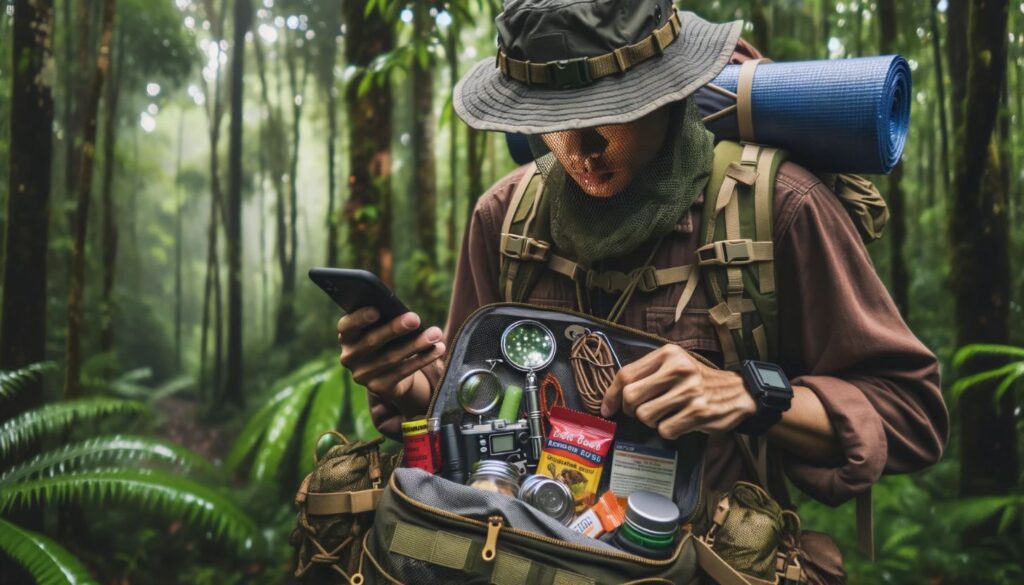
Navigation and Map Reading Skills
When venturing into the wilderness alone, navigation and map reading skills are essential for your survival. If you get lost, having these skills will help you find your way back to safety. Here are some wilderness survival tips and solo adventure tips to help you navigate unfamiliar terrain:
- Always carry a compass and map. These tools will help you determine your current location and the direction you need to go to reach your destination.
- Learn how to read topographical maps. This skill will help you understand the terrain and plan your route accordingly.
- Pay attention to landmarks. Make note of prominent natural features such as mountains, rivers, and trees to help orient yourself.
- Leave a trail. Mark your path as you go using signs or symbols that you can easily recognize.
- Consider using a GPS device. A handheld GPS can be a valuable tool for navigation, especially in areas with poor visibility or dense foliage.
By mastering these wilderness survival tips and solo adventure tips, you will be better equipped to navigate unfamiliar terrain and find your way back to safety. Remember to always plan your route ahead of time, carry the appropriate gear, and stay aware of your surroundings.
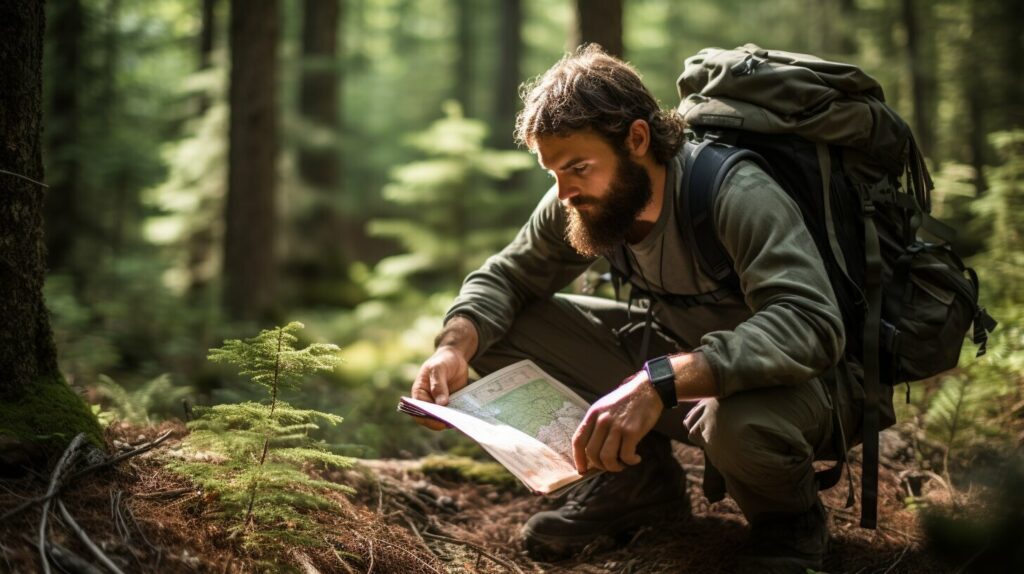
Shelter Building Techniques
When venturing alone in the wilderness, building a shelter is crucial for your survival, as it provides protection from the elements and helps regulate body temperature. Here are some wilderness survival tips and solo camping essentials to help you build a shelter:
- Location: Choose a flat area that is not exposed to the wind and has access to natural resources such as wood and water.
- Materials: Use natural materials such as branches, leaves, and moss to create a sturdy and waterproof shelter.
- Design: Consider the type of shelter that suits your needs, such as a lean-to, debris hut, or snow cave.
Remember to pack a sturdy and reliable camping tent as part of your wilderness survival gear, as it provides additional protection against extreme weather conditions.
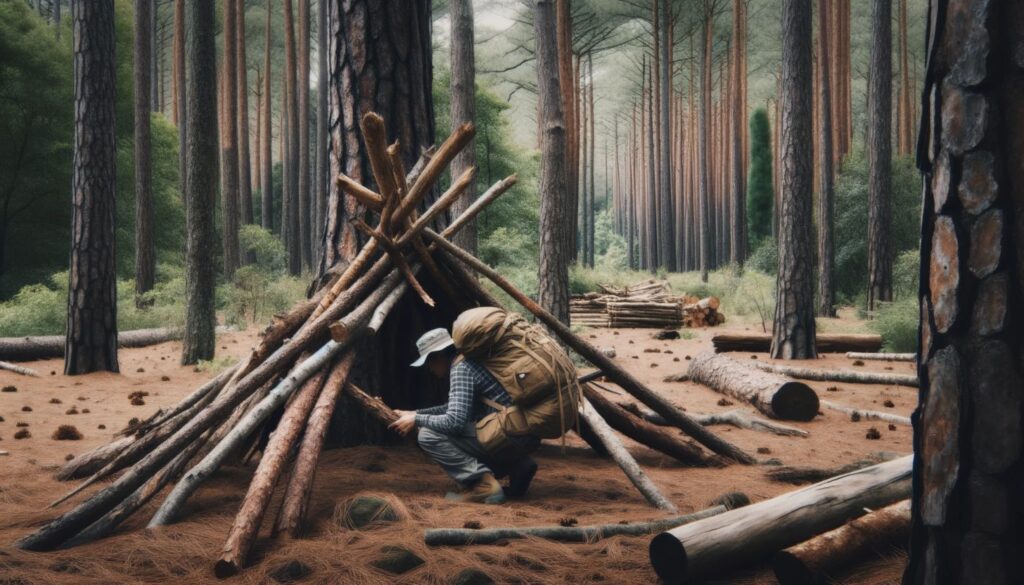
“Building a shelter is not just about staying alive, it’s about being comfortable and giving yourself peace of mind.”
Debris Hut
One of the easiest and most effective shelter building techniques is the debris hut. Here’s how to build a debris hut:
- Find a long, sturdy branch and lean it against a large tree or rock with one end on the ground.
- Stack smaller branches and twigs against the large branch to create a frame for the debris hut.
- Collect leaves, grass, and moss and pile them on top of the frame to create a thick layer of insulation.
- Create a small entrance to the debris hut and cover it with branches and leaves to keep out the cold air.
With these wilderness survival tips and solo camping essentials, you can now build a warm and comfortable shelter that will keep you safe and secure during your solo adventures in the wild.
Fire Starting Methods and Fire Safety
Fire is an essential element for your survival when you are alone in the wilderness. It provides warmth, protection against wild animals, and is useful for cooking your food. However, starting a fire can be challenging, especially when you are not equipped with the right knowledge and tools. Here are some wilderness survival tips and outdoor survival tactics to help you start a fire and maintain fire safety when you are alone in the wilderness.
Fire Starting Methods
When it comes to starting a fire, there are several methods you can use. Some of the most common fire starting methods include:
- Battery and steel wool
- Sunlight and magnifying glass
- Fire starter kit
- Bow drill method
Each method has its advantages and disadvantages, and it’s crucial to practice them before you head out into the wilderness. In addition, you should always carry several fire starters with you, such as waterproof matches, a lighter, or a magnesium fire starter, to ensure you have a backup in case one fails.
Fire Safety
While fire can be useful, it can also be dangerous, especially when it gets out of control. Here are some outdoor survival tactics for maintaining fire safety when you are alone in the wilderness:
- Select a safe area for your fire. Choose a flat surface and make sure there are no overhanging branches or dry grass around.
- Clear an area around your fire. Remove all dry leaves, twigs, and other materials that could catch fire easily.
- Keep a source of water nearby. Always have a bucket of water, or a water bottle, or a shovel, or sand nearby to put out the fire if it gets out of control.
- Never leave your fire unattended. Keep an eye on your fire at all times, and make sure it’s completely out before leaving it.
Remember, fire safety is everyone’s responsibility. By following these outdoor survival tactics, you can ensure that your fire is safe, controlled, and beneficial for your solo camping trip.
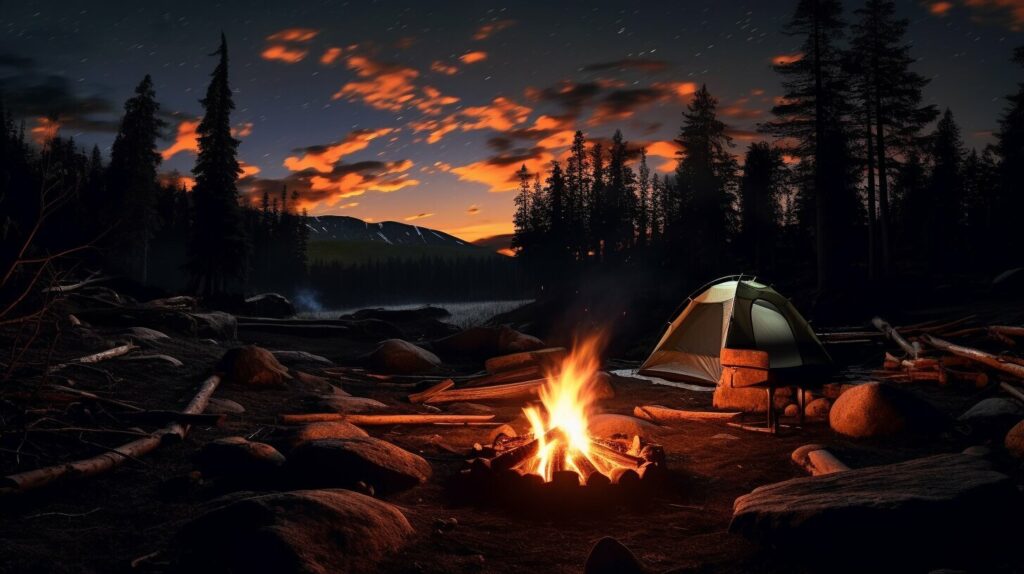
Water Sourcing and Purification
When venturing into the wilderness alone, access to clean water is crucial for your survival. However, finding a reliable water source and ensuring its safety can be challenging. Here are some wilderness survival tips and outdoor survival tactics to help you source and purify water when you’re alone in the great outdoors.
Water Sourcing
The first step in ensuring access to clean water is to locate a reliable water source. Look for natural sources such as streams, ponds, and rivers, which are more likely to be potable than stagnant water. You can also collect rainwater using a tarp or other waterproof material.
When sourcing water, it’s important to avoid any sources that may be contaminated by human or animal waste. Additionally, be wary of water sources that may contain harmful chemicals or toxins.
Water Purification
Once you’ve located a water source, your next priority is to purify the water to make it safe for consumption. There are several methods for water purification, including:
- Boiling: Boiling water for at least 5 minutes is the most effective way to kill harmful bacteria and viruses.
- Filtering: Use a water filter or purification tablets to remove impurities and pathogens from the water.
- Chemical treatment: You can use iodine or chlorine drops to disinfect the water.
It’s important to note that not all water purification methods are effective against all types of pathogens. Therefore, it’s best to use a combination of methods to ensure your water is safe to drink.
By following these wilderness survival tips and outdoor survival tactics for water sourcing and purification, you can stay hydrated and healthy during your solo adventures in the wilderness.
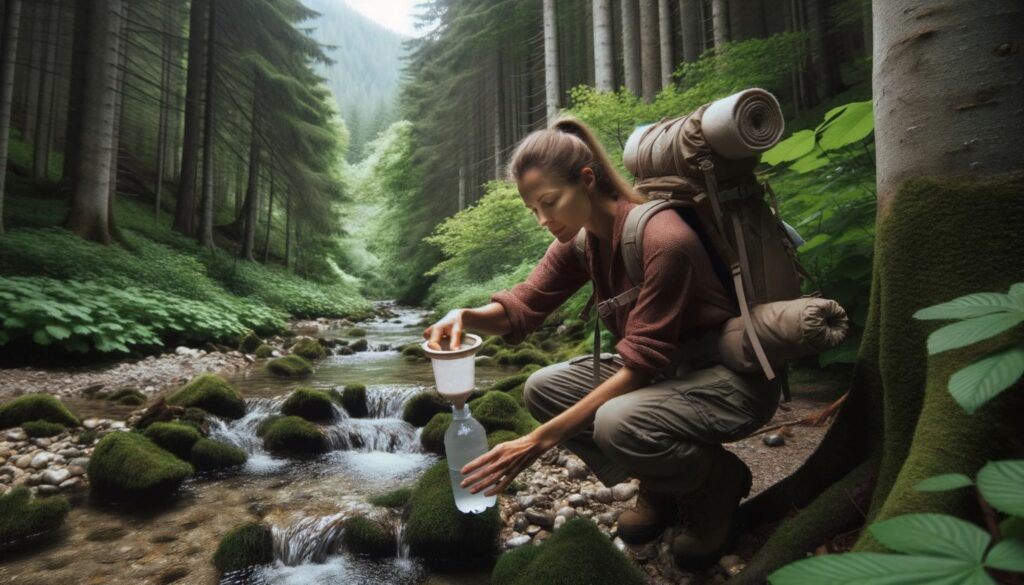
Food Foraging and Basic Wilderness Cooking
Being able to find and prepare food is a crucial survivalist skill that can make all the difference when you are alone in the wilderness. Here are some wilderness survival tips and techniques for food foraging and basic wilderness cooking that can help you sustain yourself during your solo adventures.
Food Foraging Techniques
When foraging for food in the wild, it’s important to be able to identify what you can and cannot eat. Some common edible plants include berries, nuts, and certain types of roots and leaves. However, it’s important to do your research and learn about the plants in your area before attempting to forage for food.
When hunting for game, it’s important to have the right tools and techniques. You should have a hunting knife, a sharpener, and a sturdy pack to carry your hunting gear. Additionally, you should learn how to create snares and traps to catch small game like rabbits or squirrels.
Basic Wilderness Cooking
Once you have caught or foraged for your food, you need to prepare it for eating. Basic wilderness cooking techniques can help you make the most out of the ingredients you have on hand. Here are some survivalist skills for cooking in the wild:
- Creating a fire to cook over
- Building a simple spit to roast meat
- Using hot rocks to cook food
- Creating a basic oven using mud or clay
Remember, safety is paramount when cooking in the wilderness. Avoid eating anything that you cannot identify, and always cook meat thoroughly to avoid getting sick.
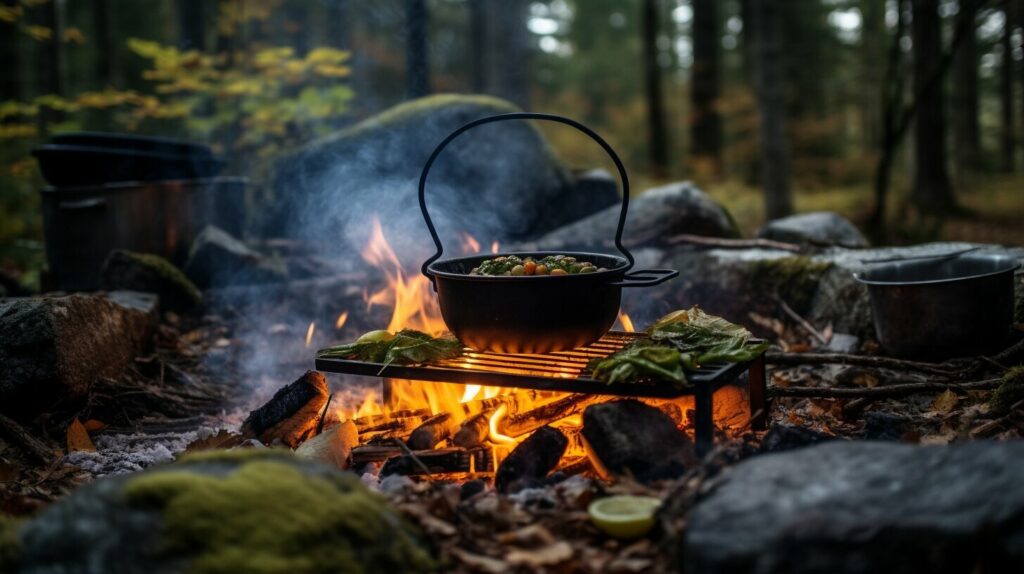
“Being able to forage for food and cook in the wilderness is an essential survivalist skill that can help ensure your safety and well-being during solo adventures in the great outdoors.”
First Aid and Emergency Medical Skills
In an emergency situation when there is no immediate help available, having knowledge of basic first aid and emergency medical skills is crucial for solo survival. Here are some emergency preparedness techniques and survivalist skills that you should learn before embarking on any solo adventure.
- CPR: Cardio-Pulmonary Resuscitation (CPR) is an emergency procedure that can be performed to save someone’s life if their breathing or heartbeat has stopped. Learn how to perform CPR properly in case of an emergency.
- Wound Care: Learn how to clean and dress wounds, control bleeding, and recognize signs of infection. This knowledge can help prevent infections and promote healing.
- Burn Care: Learn how to identify and treat different types of burns, including first, second, and third-degree burns. Burns can be incredibly painful and can quickly become infected, so knowing how to properly treat them is essential.
- Fracture Care: Learn how to recognize the signs of a fracture, immobilize the affected limb, and provide support until medical help arrives. An improperly treated fracture can result in lifelong complications, so it’s essential to know how to properly care for one.
These are just a few survivalist skills that you should learn to prepare for emergencies in the wilderness. Remember, it’s always better to be over-prepared than under-prepared when it comes to your safety.
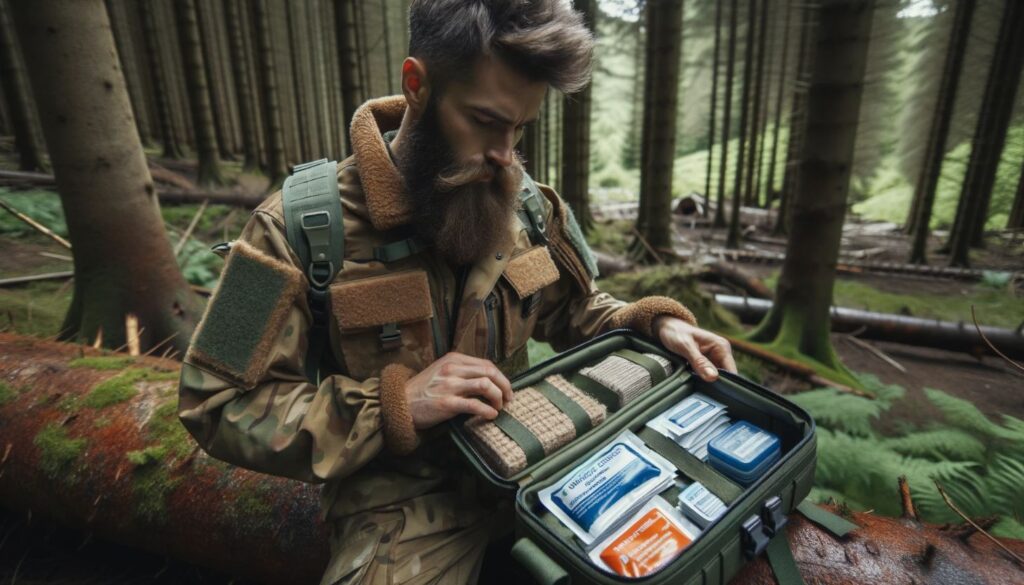
“Accidents and injuries can happen at any time, making first aid and emergency medical skills crucial for solo survival.”
Conclusion
Mastering solo survival skills is essential for anyone who loves to explore the great outdoors alone. By learning the techniques and strategies outlined in this guide, you will be well-equipped to handle any challenges that may arise during your solo adventures, ensuring your safety and enjoyment.
Remember to always prioritize safety by building a strong foundation of self-reliance, carrying the essential wilderness survival gear, and learning navigation and map reading skills. Don’t forget to build a shelter, start a fire safely, source and purify water, and forage for food to ensure your basic needs are met.
In addition, it’s crucial to have basic first aid and emergency medical skills to respond effectively in case of a medical emergency. Always avoid taking unnecessary risks and keep a positive mindset throughout your solo adventure. With the right skills and knowledge, you can explore the great outdoors safely and enjoy the freedom of being self-reliant.
FAQ
What are solo survival skills?
Solo survival skills are techniques and strategies that individuals can learn to ensure their safety when venturing alone into the wilderness. These skills encompass various aspects such as navigation, shelter building, fire starting, water sourcing, and first aid.
Why are solo survival skills important?
Solo survival skills are important because they empower individuals to be self-reliant and capable of handling challenging situations when there is no immediate help available. These skills increase safety and confidence, allowing for a more enjoyable solo adventure experience.
What are some essential wilderness survival tips?
Some essential wilderness survival tips include carrying essential gear, practicing good navigation skills, knowing how to build a shelter, starting and maintaining a fire, sourcing and purifying water, foraging for food, and having basic first aid knowledge.
What should be included in solo camping essentials?
Solo camping essentials typically include a sturdy tent or tarp for shelter, a sleeping bag or sleeping pad for comfort, a backpack with necessary supplies, a reliable light source, a water filter or purification tablets, a portable stove or means to cook food, appropriate clothing, and first aid supplies.
How can I improve my navigation and map reading skills?
To improve navigation and map reading skills, you can take courses or workshops specifically focused on these topics. Additionally, practice using maps and compasses regularly, familiarize yourself with topographic maps, and learn how to interpret different symbols and terrain features.
What are some effective shelter building techniques?
Some effective shelter building techniques include constructing a debris shelter using natural materials like branches and leaves, building a lean-to shelter against a sturdy tree or rock, or using a tarp or emergency bivvy for quick and easy protection from the elements.
How can I start a fire in the wilderness?
Starting a fire in the wilderness can be achieved through various methods such as using a fire starter tool, creating a friction fire with a bow drill or hand drill, or utilizing natural fire-starting materials like dry tinder, kindling, and firewood. It’s important to practice fire safety and ensure the fire is completely extinguished before leaving.
What are some water sourcing and purification techniques?
Water sourcing techniques include finding natural water sources like streams, lakes, or natural springs. To purify water, you can use methods such as boiling, using water purification tablets, using a portable water filter, or employing natural methods like solar disinfection or chemical disinfection using bleach.
How can I forage for food in the wilderness?
Foraging for food in the wilderness involves identifying edible plants, mushrooms, and berries. It’s crucial to educate yourself on local flora, learn how to differentiate between edible and poisonous plants, and practice sustainable foraging practices. Additionally, learning basic wilderness cooking techniques can help you prepare the food you forage.
What first aid skills are important for solo survival?
Important first aid skills for solo survival include knowing how to treat minor injuries like cuts, burns, and sprains, recognizing and responding to common medical emergencies such as allergic reactions or heat stroke, and having knowledge of how to perform CPR and use basic medical supplies like bandages and antiseptic solutions.

